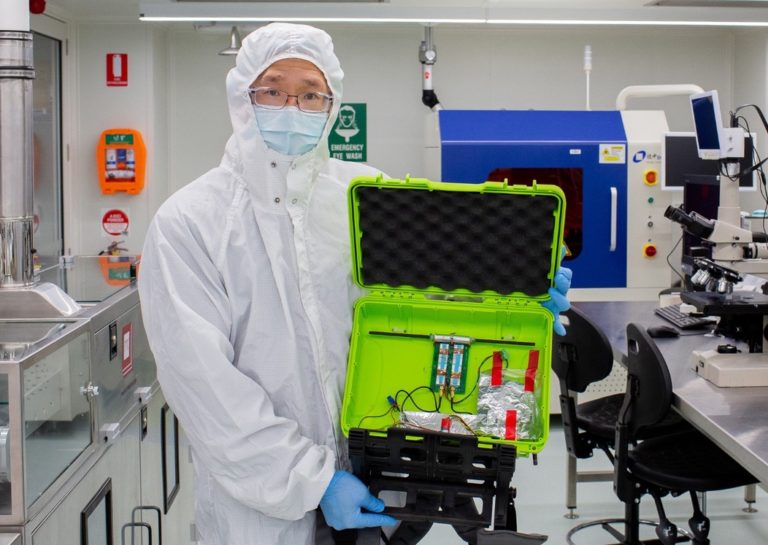CD3D and RMIT develop MAPrad device to support Moon settlement

Local start-up, CD3D, has received a $197,487 Demonstrator Feasibility Grant under the Australian Space Agency’s Moon to Mars initiative, to further develop MAPrad – a prototype miniature radar device that could support human settlement on the Moon – in partnership with RMIT University.
The Grant will fund a project to determine the feasibility of MAPrad, a space-hardened, compact, ultrawideband radar that can be used to sound lunar or Martian geology from surface to depth. CD3D will develop a prototype for testing over terrestrial analogue targets. The project will consider options for lander/rover deployment to use ultra-compact, 5-10 times lighter-weight, low power deep-penetrating radars tested for use in both lunar and Martian geological mapping.
A miniature device that scans below ground to identify ice deposits and hollow lava tubes on the Moon, MAPrad, is just one tenth the size of existing ground penetrating radar systems, yet can see almost twice as deeply below ground – more than 100 metres down.
CD3D CEO and RMIT Honorary Professor, James Macnae, said their unique geophysical sensor had several advantages over existing technology that made it more suitable for space missions.
“MAPrad is smaller, lighter and uses no more power than existing ground penetrating radar devices.,” Macnae said. “It was able to achieve this improved performance, even after being shrunken to a hand-held size, because it operates in a different frequency range: using the magnetic rather than the electric component of electromagnetic waves.”
The specialised radar system was developed by RMIT University and Canadian company International Groundradar Consulting in a collaborative research project funded through the AMIRA Global network.
To further prove the technology’s usefulness for a range of Moon missions, the researchers will be seeking permission to scan one the world’s largest accessible systems of lava tubes at the spectacular Undara caves in Far North Queensland, Australia. The tubes have diameters of up to 20 metres and some are several hundred metres in length.
Massive tunnels left by ancient volcanic lava flows may exist at shallow depths below the surface of the Moon and Mars. They could be suitable for the construction of space colonies as they provide protection from the Moon’s frequent meteorite impacts, high-energy ultra-violet radiation and energetic particles, not to mention extreme temperatures.
On the Moon’s surface, for example, daytime temperatures are often well above 100°C, dropping dramatically to below -150°C at night, while the insulated tunnels could provide a stable environment of around -22°C.
But of more immediate concern is mapping ice-water deposits on the Moon and getting a clearer picture of the resources available there to support life.
The system could be mounted on a space rover, or even attached to a spacecraft in low orbit, to monitor for minerals in near-future missions and for lava tubes in later missions.
